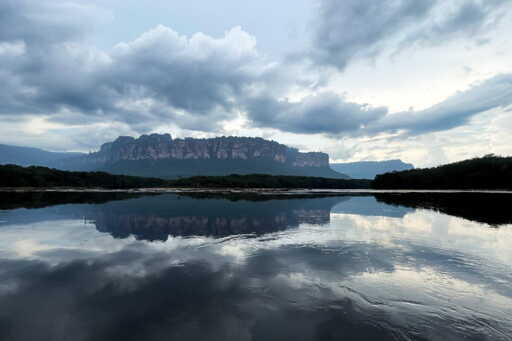CÚCUTA, Colombia — When Daniel Romero worked at a river mine in Canaima National Park, in southeastern Venezuela, he would wait until the sun had slipped behind the ancient sandstone tepuis before heading to the raft. Sometimes he thought of his grandparents tending to their conucos — small garden plots — and gliding across mirror-black and amber rivers in dugout canoes. They had always opposed mines encroaching on their ancestral lands. Romero, a tour guide from the Pemón Indigenous group, who spoke to Mongabay by phone, never imagined he’d end up working in one. Though grueling, he became used to mud-caked skin, roaring machines and his torchlight revealing silt-clouded rivers as he hunted for gold. Mining for gold, as well as other resources such as coltan and rare earths, has expanded in southern Venezuela since the early 2000s, accelerating over the past decade. It is now rife in areas controlled by state, armed and criminal actors and has drawn in many Indigenous communities seeking to earn a living. It is now spilling into protected areas like Canaima National Park, a UNESCO World Heritage Site and home to Angel Falls, the world’s tallest uninterrupted waterfall at 979 meters (3,212 feet). A May 2025 World Heritage Watch report based on data from SOS Orinoco found five mining sites and two expansions appeared in the park. Between 2000 and 2023, mined areas grew by more than 1,300%, from 122 hectares (301 acres) to 1,582 hectares (3,909 acres), while another 73 hectares (180 acres)…This article was originally published on Mongabay
From Conservation news via this RSS feed


